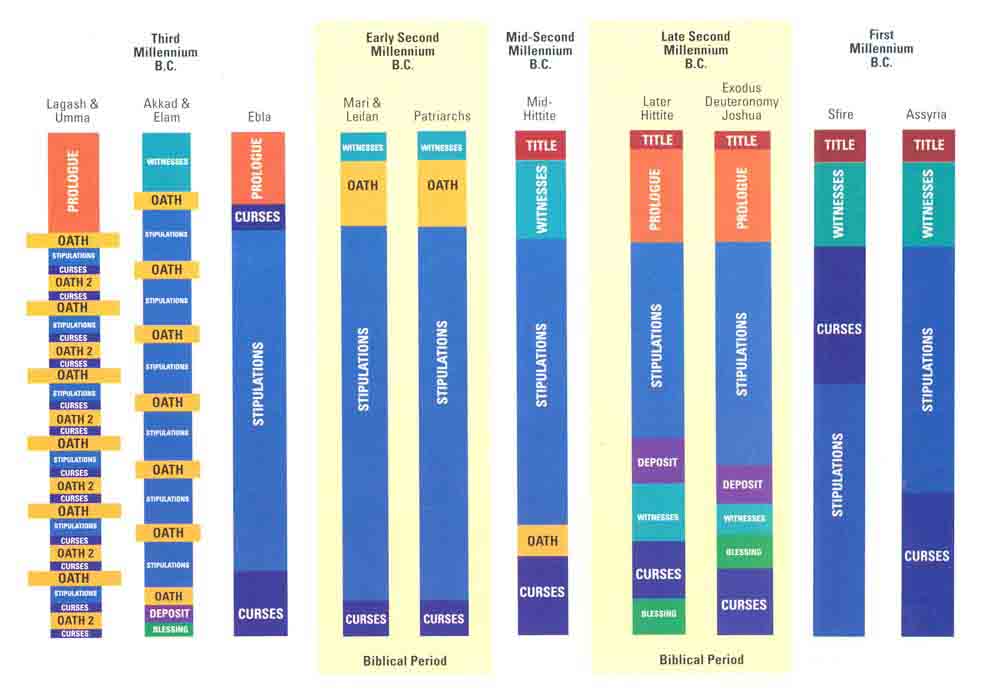Image Details

The covenants contain various elements, some of which recur from place to place and period to period; these elements are labeled and color-coded. One essential element of any treaty is the stipulations the parties agree to follow (to respect property rights, for example)—so stipulations appear in every treaty. But other elements, such as the swearing of oaths, appear in some treaties but not in others.
Although all the covenants have a formal beginning, middle and end, the overall form and structure vary considerably with respect to time and place. Some begin with a prologue, in which the history of a king or people is recounted; others begin by invoking witnesses, such as standing stones or a god; still others begin with a short preamble or title, in which the reasons for the pact are laid out.
The middle part of covenants is made up of a combination of elements: stipulations, oaths, curses, the invocation of witnesses, and so on. In some treaties, moreover, such as those from eastern Mesopotamia (the two treaties at the far left), some combination of elements (an oath followed by stipulations, for example) forms a unit that is repeated several times—the chart shows this repetition by extending the first element in the unit beyond the bar.
The end of covenants, too, comprises various elements; some conclude with blessings, expressing the hope that the agreements will be kept; others end with curses, promising ill treatment for violations. Sometimes treaties contain provisions for depositing the written document in a sacred place (such as the Ark of the Covenant in Exodus) or a place for safe-keeping.
The form and structure of covenants in the Near East changed dramatically over time—the highly complex treaties of Lagash and Umma from the third millennium B.C., for example, are in striking contrast to the pared-down, simple treaties of the early second millennium B.C. Such patterns help us date treaties that cannot be dated by other means. Kitchen observes that the treaties in Genesis match early second-millennium B.C. treaties, whereas the treaties in Exodus/Deuteronomy (the Sinai Covenant) and the Book of Joshua match late second-millennium B.C. treaties. The structures of these covenants provide another piece of evidence that the Bible’s chronology is reliable.
